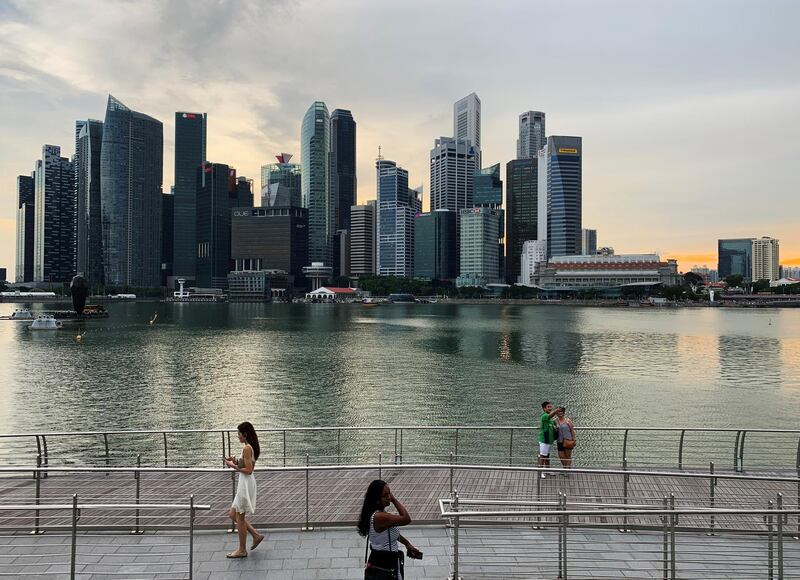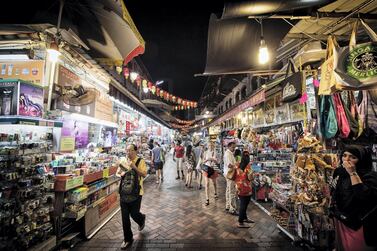Singapore’s government cut its forecast for growth this year to almost zero as the escalating US-China trade war dampens the region’s most trade-reliant economies.
Singapore’s economy now is seen growing 0 per cent to minus 1 per cent this year, down from a previous projection of 1.5 per cent to minus 2.5 per cent, the Ministry of Trade and Industry said Tuesday, with growth expected to come in near the midpoint of the range.
Final second-quarter figures showed gross domestic product contracting an annualized 3.3 per cent from the first three months of the year, versus the previous estimate of a 3.4 per cent contraction.
“As a small and open economy, Singapore is one of the economies that feel it first,” said Selena Ling, head of treasury research and strategy at Oversea-Chinese Banking in Singapore. “We see growth being downgraded in a number of different places like Hong Kong, though it may be for different reasons. This is the trend for most of Asia at the moment.”
Singapore’s economy grew 0.1 per cent in the second quarter compared to a year ago, unchanged from the government’s previous estimate. The median estimates in a Bloomberg survey of economists were for 3.0 per cent contraction on-quarter and 0.2 per cent growth compared to a year ago.
The Singapore dollar weakened 0.1 per cent after the release, a day after hitting a two-year low.
The outlook for the city-state has darkened considerably in recent months as the US and China, its two biggest trading partners, continue to spar over trade. That has raised the prospect of a recession in Singapore and possible job losses.
“Against this challenging external macroeconomic backdrop, and the deepening downturn in the global electronics cycle, the Singapore economy is likely to continue to face strong headwinds for the rest of the year,” the ministry said in a statement.
Monetary policy remains unchanged and the central bank isn’t considering holding an off-cycle policy meeting, Edward Robinson, the Monetary Authority of Singapore’s deputy managing director for economic policy, said in a briefing.
In his National Day message last week, Prime Minister Lee Hsien Loong said the government is willing to stimulate the economy if needed.
“The story of a second-half stabilization is probably already decimated,” Mr Ling said. “Some fiscal response is probably forthcoming, likely some form of targeted help for businesses and workers."
Exports plunged in June to their second-worst rate since the global financial crisis a decade ago. The purchasing managers index shrank in May for the first time since 2016 and has now shown contraction for three straight months, pressured by an ailing electronics sector.
Other data Tuesday from Enterprise Singapore showed non-oil domestic exports shrank 14.6 per cent in the second quarter from the year-earlier period as shipments of both electronic and non-electronic products declined.
“A lot of Singapore’s growth outlook has been premised on where final demand is going – and that’s expected to be much worse now, including for the regional economies,” said Vishnu Varathan, head of economics and strategy at Mizuho Bank in Singapore. “The cascade from the trade war could go much further than expected.”
The forecast for non-oil exports this year was revised down to -9 per cent to -8 per cent, from previous expectations of minus 2 per cent to 0 per cent, Enterprise Singapore said.
The downward revision to the GDP forecast “strengthens, against a dovish global environment, the case for an easing in the SGD policy this October,” DBS Bank senior currency economist Philip Wee said, referring to the Singapore dollar.
The services sector contracted an annualised 2 per cent in the second quarter from the previous three months. Construction shrank 5.5 per cent and manufacturing fell 3.4 per cent
Wholesale and retail trade dropped 7.9 per cent, while finance and insurance grew 7.6 per cent and transportation and storage expanded 6.5 per cent.







